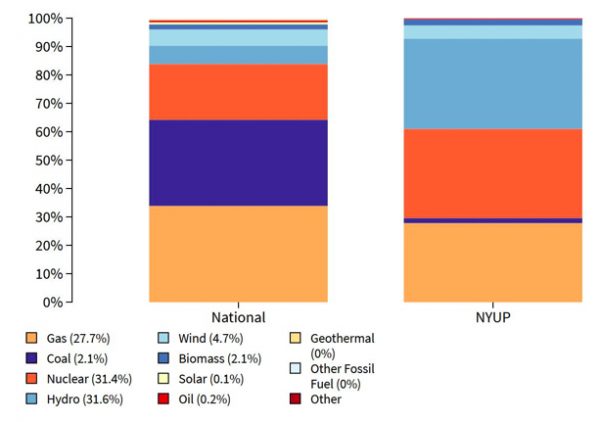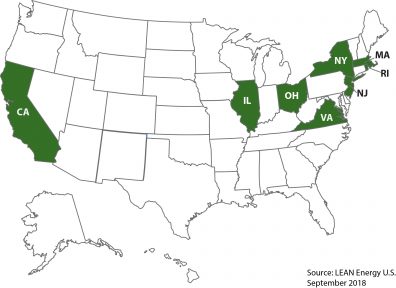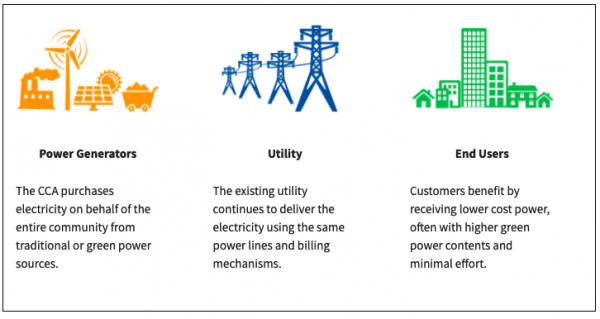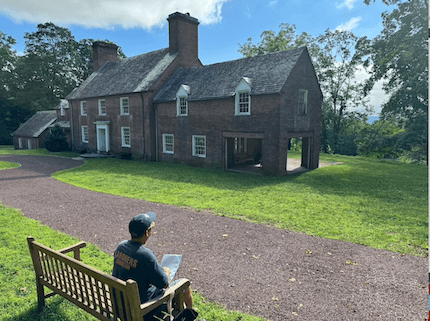 Earth Matters focuses on conservation, sustainability, recycling and healthy living. This weekly series is brought to you by Maria Luisa Boutique and Strawtown Studio and Summer Play Camp at Blue Rock School and Dying To Bloom, a natural burial boutique for humans and pets. Applications are now available for the ML by Maria Luisa Scholarships for the 2018-2019 year. The application deadline is March 16, 2019.
Earth Matters focuses on conservation, sustainability, recycling and healthy living. This weekly series is brought to you by Maria Luisa Boutique and Strawtown Studio and Summer Play Camp at Blue Rock School and Dying To Bloom, a natural burial boutique for humans and pets. Applications are now available for the ML by Maria Luisa Scholarships for the 2018-2019 year. The application deadline is March 16, 2019. If Earth Matters to you, sign up for our mailing list and get the next installment delivered right to your inbox.
Behind the Concept of Community Power
by Andrew Goodwillie
When it comes to electricity in the Nyack area, our thoughts might first turn to Orange and Rockland (O&R), the local utility that for a long time had monopoly control of both the supply and delivery of electricity in our region. Residential and commercial customers had no choice over the price or source of electricity. If someone wanted electricity, they had to sign up with O&R.
The colour-coded EPA graph below shows the sources used to generate electricity for O&R (on the right) compared to the national average (left). At present, about 30% of the O&R-supplied electricity is from fossil fuels, mainly gas and coal; another 30% comes from nuclear, and yet another 30% is from hydro. Wind power contributes 5%. Solar provides only a tiny amount–just one-tenth of one percent.
Fossil fuel by-products
Electricity from coal, gas, and oil is often cited as being cheap and convenient, but its cost to our planet is alarmingly high. Burning these fossil fuels to generate electricity spews copious quantities of carbon dioxide, sulphur dioxide, nitrous oxides, and other pollutants into the air.
 Carbon dioxide traps heat in the atmosphere, changing our weather systems and melting the ice sheets and glaciers. Much of that heat is absorbed by the oceans, which shifts global climatic patterns, alters marine ecologies, and undercuts floating ice shelves. Carbon dioxide gas is also absorbed by the ocean, destablising the delicate chemical balance of the marine ecosystem. Scientists estimate that half of the Great Barrier Reef has died in the past three years due to ocean warming and acidification.
Carbon dioxide traps heat in the atmosphere, changing our weather systems and melting the ice sheets and glaciers. Much of that heat is absorbed by the oceans, which shifts global climatic patterns, alters marine ecologies, and undercuts floating ice shelves. Carbon dioxide gas is also absorbed by the ocean, destablising the delicate chemical balance of the marine ecosystem. Scientists estimate that half of the Great Barrier Reef has died in the past three years due to ocean warming and acidification.
Sulphur dioxide and nitrous oxide gases are harmful respiratory irritants for humans, and, as acid rain, cause profound damage to fragile ecosystems. After reaction with sunlight, these two gases also produce dangerous ground-level ozone-laced smog that is a major health hazard.
Another by-product from burning fossil fuels to generate electricity is particulate matter such as soot. These fine particles lodge deep in our lungs, exacerbating pulmonary disorders.
Loosening the utility monopoly
About two decades ago, deregulation of the New York State energy market allowed individual customers to choose an electricity supplier other than their local utility. The utility still is required to provide the delivery infrastructure, but customers can now choose where their electricity comes from. Retail ESCOs (Energy Service Companies) sprang up to act as market middlemen to supply that electricity. Today, some ESCOs offer electricity derived from renewable sources such as wind and solar. The problem with the retail ESCO model is that customers often become locked into unfavorable, expensive, and confusing long-term contracts. In any community, most residents still get their electricity supply from the local utility because of the hassle and confusion of switching to an ESCO. Still, the energy landscape is changing for the better.
The new option: Renewable energy at the community level
The New York State Renewables Energy Vision (REV) program, begun in 2014 and implemented by the NYS Public Services Commission, is rapidly transforming our electricity options. As part of REV, a critically important new “community power” initiative now allows each village to decide which company should be the default electricity supplier within the municipality.
In one fell swoop that rule change allows a municipality to offer all of its residents a clean, renewable, environmentally-friendly electricity supply. In addition to the dollars potentially saved by customers, the savings to the environment could be priceless.
How does community power work?
Under the new rules, villages may band together and participate in a Community Choice Aggregation (CCA) plan. Through economies of scale, the large number of potential residential and business customers within a CCA encourages competing renewable energy suppliers to offer favourable rates in order to win the supply service contract. Even better, it is the villages, not the utility company lawyers or ESCO attorneys, that dictate the terms of the CCA contract. With a term of two or three years, CCA contracts can be highly flexible.
In choosing a renewable energy CCA program, it is expected that a typical residential or commercial customer would save about 5-10% off their electric bill. If a solar option is chosen or is later incorporated by the CCA, a further 10% is taken off customer bills because of a solar incentive offered by the state.
In the O&R region, plans for dozens of so-called solar farms are going through the permitting stage. Solar farms, each up to a few acres in size, allow electricity to be generated closer to where customers live. Solar farms promote another innovative aspect of the REV program, that of localised (“distributed”) electricity generation. It breaks the old utility model of relying upon huge far-off power plants. As demand for renewably-sourced green electricity increases, many solar farms in our region are expected to be built relatively quickly, allowing their output to be fed into CCA program.

Eight states have to date authorized CCAs, and several more are in process. Map: Lean Energy U.S.
Logistically, the CCA electric supply program is managed by a CCA “administrator,” a company that acts on behalf of the participating villages. Like the CCA contract, the interests of the CCA administrator are aligned with those of the village residents and businesses, not the utility or ESCO. The administrator also helps with community outreach efforts. Two or three administrator companies are recognized for the O&R territory by the Public Service Commission. Villages and residents pay nothing to the administrator company–they are compensated directly by the chosen electricity supplier.
Each village wishing to participate in a renewable energy CCA program would sign a contract on behalf of its residents. The administrator company then does the rest. Within each village, any resident or commercial customer currently getting their electric supply from O&R would automatically be switched at no cost to the new supplier. That new cheaper renewable energy supplier becomes the default within the village. Customers can choose to opt out of the new community-wide plan at any time at no cost and O&R is legally obliged to take them back if they change their mind, again at no cost. Any customers who already have electricity supplied through a retail ESCO are not automatically switched to become part of this new community power scheme. That’s the choice of the customer.
This is such an exciting opportunity to bring renewable energy to our entire community. The Nyack village board has begun the process to join other communities in our area to provide renewable energy to our residents that helps reduce our carbon footprint and saves money. —- Dr. Don Hammond, Mayor of Nyack
Where CCAs have been adopted, they’ve been successful
In places where the CCA model has been adopted, virtually all residents choose to go with the new default renewable energy supplier and, over time, many of the remainder tend to switch over because of the better rates and the environmental benefits.
There is a nearby precedent for the renewable energy CCA model. In 2016, more than two dozen Westchester municipalities formed a coalition to provide a green renewables option for 100,000 residential and commercial users. It was the largest purchase of clean power in the history of the state. They recently re-bid their contract and secured an even lower rate.
The CCA program is a new and promising opportunity for communities in Rockland County. By moving away from fossil fuel-based electricity, all participating residents and businesses have the chance to significantly reduce the environmental impact of their electric supply, as well as save some money on each bill. Expect to hear more about a CCA electric supply program in your own community.
South Nyack resident Andrew Goodwillie works in the marine geology-geophysics division at Lamont-Doherty Earth Observatory of Columbia University. He also serves as a trustee on the South Nyack Village Board.
Learn more:
- The NYSERDA website page for Community Choice Aggregation describes the process and benefits for New York State municipalities.
- Nonprofit advocacy group Lean Energy U.S. is dedicated to the accelerated expansion and competitive success of clean energy CCA nationwide.
Read Earth Matters every Wednesday on Nyack News And Views, or sign up for the Earth Matters mailing list.
Earth Matters, a weekly feature that focuses on conservation, sustainability, recycling and healthy living, is sponsored by Maria Luisa Boutique, Dying to Bloom, Strawtown Studio, and Summer Play Camp at Blue Rock School.














